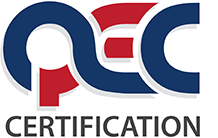- 1. Routinely check your tires
- 2. Be aware of your physical condition; be extra alert when driving in the city
- 3. Slow down
- 4. Pay attention to any special seasonal driving requirements
- 5. Become a good night-time driver
Routinely check your tires
Always check your tyres before you hit the road. Keep your tyres properly inflated. The correct air pressure for your tyres is specified by the vehicle manufacturer and can be found on the vehicle door edge, door post, and glove box door or fuel door. It is also listed in the owner's manual. The number listed on the side of the tyre is not the recommended air pressure for your tyre; it is the maximum air pressure for the tyre. You should check your tyre's air pressure at least once a month. Check the tyre's tread depth. Proper tread depth will help prevent skids and aquaplaning.
Be aware of your physical condition, and be extra alert when driving in the city
You need good vision and good hearing, and you must be alert and responsive. Never drive when you have been drinking alcohol; taken any prescription or over-the-counter medicine that can cause drowsiness; are under the influence of any drug that may affect your performance or perception; are very tired; or are emotionally upset. These can all cause you to become careless.
Slow down
Watch your speed. Driving at slower speeds gives you more time to react to unexpected situations.
Pay attention to any special seasonal driving requirements
You not only have to prepare your car and tyres for winter, but for other seasons. Fog, excessive rainfall, glare and heat all bring specific kinds of adjustments and maintenance. For more information, consult your Goodyear dealer.
Become a good night-time driver
Night driving can be a pleasure if you are aware of the special alertness demanded by low visibility.
A few fundamentals:
1. Keep your headlights and tail lights on for the entire period between sunset and sunrise.
2. Put your headlights on low-beam when another vehicle is within 200 metres, or when driving behind another vehicle.
3. If your car breaks down at night, make sure that other drivers can see your car and stop in time.
4. Turn on the hazard warning lights and, if possible, pull off the road.
5. Avoid stopping just over a hill or just around a curve. A car following you may not see you in time.
6. Take good notice of roadside reflectors and any other helpful visual signals to stay on the road at night.




